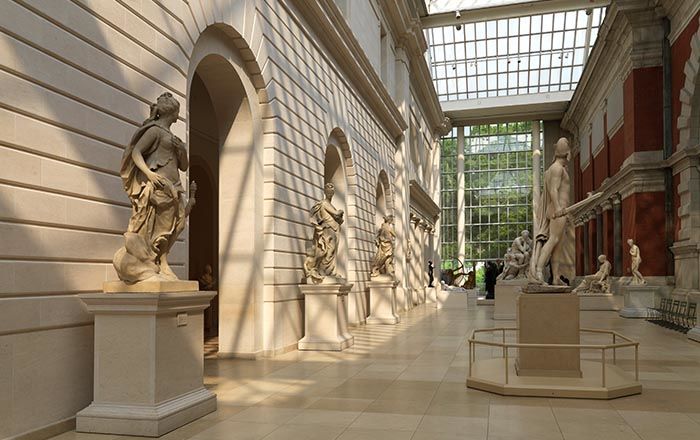Chasuble
Not on view
At the core of this garment are two fine early-18th century silks of the type commonly called "bizarre". In coral pink, gold and silver thread, the sweeping, fantastical foliate motifs were inspired by imported Indian and Persian textiles. However, in the 19th century (or even early 20th century) these silks were cut and retailored (with machine-stitching) to make a pair of chasubles– the tabard-like garment worn by Catholic priests during church services. Its pendant is also in The Met's collection (52.1.13) and in slightly worse condition, with more patching. As part of that campaign, machine quilting stitches were applied all over the surface of the textile in an effort to stabilize it, and garish modern gold-colored braid was attached over seams. Clearly, both chasubles were used in an ecclesiastic setting, with signs of wear-and-tear and sweat-staining still clearly discernable.
This image cannot be enlarged, viewed at full screen, or downloaded.

